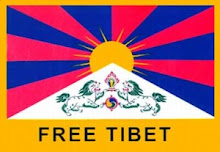 «Following the release of Gili Garabdi in spring 2005, which promptly landed at number 1 in the WMCE Top 10, Fanfare Ciocarlia travelled throughout Europe to record with musicians from the continent’s extended Romany community. Overcoming borders and visas, foreign tongues and rhythms, more than two dozen musicians from France to Bulgaria came together to create Queens and Kings an extraordinary celebration of Gypsy songs. Casual observers may wonder how Fanfare Ciocărlia’s roaring Balkan funk could possibly fuse with the flamenco guitars of French Gitans Kaloome or Macedonian legend Esma Redzepova’s accordion driven music? Zece Prajini’s musical magicians shrug off such concerns, noting that they share elements of language, experience, and an almost indescribable yet very Gypsy musical synergy with their guests. Hungarian music has permeated northern Romania for centuries, while Yugoslav and Bulgarian music came from encounters with travelling Gypsy communities or on pirate cassettes. Spain and France existed in pre-war memories, lost yet not forgotten Latin connections; as did jazz and pop flavours long filtered through closed borders. From these sources and their own ancient Gypsy roots, Zece Prajini’s musicians built Fanfare Ciocărlia. Here, accompanied by some of Europe’s finest singers, Romania’s brass dervishes share tales of life, love and loss. Queens and Kings celebrates unity in diversity while standing as a testament to the vision of Ioan Ivancea, Fanfare Ciocărlia’s clarinet-playing patriarch, who died in October 2006. To Ioan then, a true Gypsy King, this album is dedicated.» (Asphalt-Tango)
«Following the release of Gili Garabdi in spring 2005, which promptly landed at number 1 in the WMCE Top 10, Fanfare Ciocarlia travelled throughout Europe to record with musicians from the continent’s extended Romany community. Overcoming borders and visas, foreign tongues and rhythms, more than two dozen musicians from France to Bulgaria came together to create Queens and Kings an extraordinary celebration of Gypsy songs. Casual observers may wonder how Fanfare Ciocărlia’s roaring Balkan funk could possibly fuse with the flamenco guitars of French Gitans Kaloome or Macedonian legend Esma Redzepova’s accordion driven music? Zece Prajini’s musical magicians shrug off such concerns, noting that they share elements of language, experience, and an almost indescribable yet very Gypsy musical synergy with their guests. Hungarian music has permeated northern Romania for centuries, while Yugoslav and Bulgarian music came from encounters with travelling Gypsy communities or on pirate cassettes. Spain and France existed in pre-war memories, lost yet not forgotten Latin connections; as did jazz and pop flavours long filtered through closed borders. From these sources and their own ancient Gypsy roots, Zece Prajini’s musicians built Fanfare Ciocărlia. Here, accompanied by some of Europe’s finest singers, Romania’s brass dervishes share tales of life, love and loss. Queens and Kings celebrates unity in diversity while standing as a testament to the vision of Ioan Ivancea, Fanfare Ciocărlia’s clarinet-playing patriarch, who died in October 2006. To Ioan then, a true Gypsy King, this album is dedicated.» (Asphalt-Tango)Link in comments













